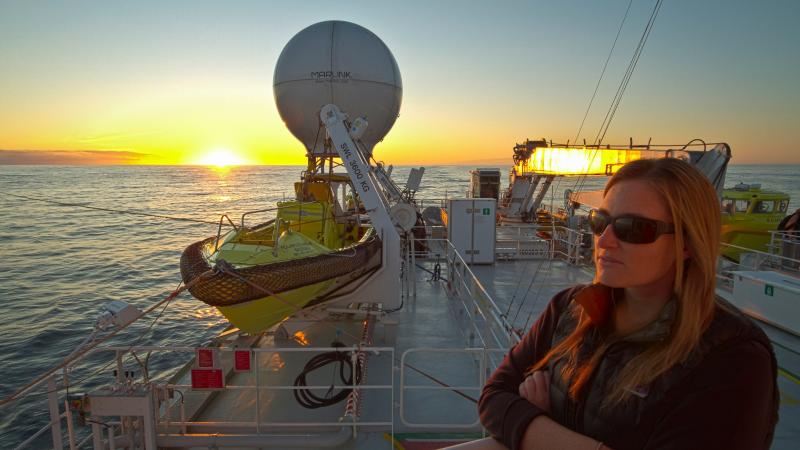Tabor offers lecture on new ocean observation technology
Tabor Academy's next Science@Work Lecture Series will focus on a new research tool meant to advance ocean observation: the Saildrone.
Join Heather McRae Tabisola for an evening lecture on February 20 at 6:30 p.m. as she shares information about the Saildrone. Program attendees will learn more about the innovative technology of unmanned surface vehicles and how they are advancing ocean observations.
The lecture is free and open to the public at Tabor Academy, 232 Front Street, Marion, in the Stroud Academic Center's Lyndon South Auditorium.
A 2001 graduate of Tabor Academy, Tabisola is a Research Coordinator with the University of Washington’s Joint Institute for the Study of Atmosphere and Oceans, a National Oceanic and Atmospheric Administration (NOAA) Cooperative Institute, in Seattle, WA. Tabisola works at the interface between the research and engineering communities, to connect people and develop new tools to explore and monitor our oceans in extreme conditions. Her current projects focus on mobile autonomous vehicles for Arctic research and long-term fisheries oceanography studies in Alaska. She has travelled the world in her work experiences, and still spends a small time of her work at sea. She holds a bachelor’s degree from the University of New Hampshire.
Tabisola will tell us about the autonomous platforms her group at NOAA is now using, created by Saildrone, Inc. Saildrone's unmanned surface vehicles are outfitted with over 40 meteorological and oceanographic research sensors, integrated in a development cooperation with the National Oceanic and Atmospheric Administration and the University of Washington. The drones, 23-foot- long sailboats, meander the seas between the U.S. and Russia to track ice melt, measure the ocean's levels of carbon dioxide, and count fish, seal, and whale populations without a single human being on board. The wind and solar-powered research vehicles are able to travel thousands of miles across the ocean, reaching some areas never before surveyed with such specialized technology.
















